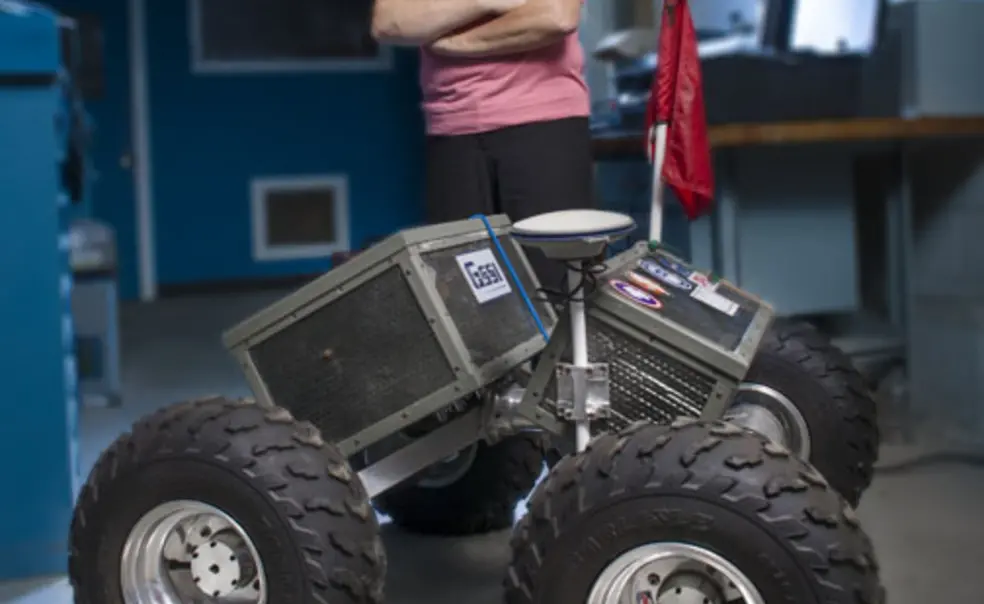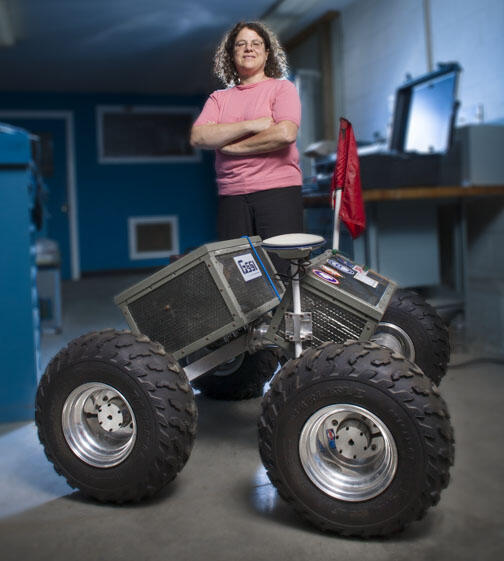Résumé Engineering professor at Dartmouth. Bachelor’s and doctoral degrees in mechanical and aerospace engineering. Master’s degree from Stanford.
Snow Walker The knee-high, battery-powered robot dubbed Yeti that Laura Ray ’84 *91 and her Dartmouth students built is making scientific study safer at the ends of the Earth. The rover traverses polar ice sheets, conducting ground-penetrating radar (GPR) surveys to reveal hidden crevasses — at times 30 feet wide and 200 feet deep — that could cave in as crews haul heavy cargo and fuel to remote research stations. During two trips to Greenland and four to Antarctica, the robot collected data to improve trek safety and located a buried building at the South Pole.
Smart Design Ray and her students, with James Lever of the U.S. Army Cold Regions Research and Engineering Laboratory, designed Yeti for temperatures of minus 20 degrees Fahrenheit. “Of all of my work, this is one of the most fun projects,” says Ray. “Research is interesting, but most of the time it doesn’t get out of the lab. This project attracts a lot of students and engages them in real engineering.” She plans to use Yeti to survey ice sheets to better understand how they move and flow over large areas, aiding the development of models to predict what ice sheets might do if sea levels rise. Ray’s team also constructed the solar-powered Cool Robot, which can travel over hundreds of miles collecting data, such as measuring Greenland’s thinning ice layer.
Polar Opposites Researchers deployed Cool Robot this summer on the Greenland ice sheet to measure pollutants. Yeti’s GPR last winter mapped ice caves on Antarctica’s Mount Erebus volcano. Ray has yet to see either of the robots perform in the field — when the youngest of her four children, now 11, heads to college, she hopes to get her chance.












No responses yet